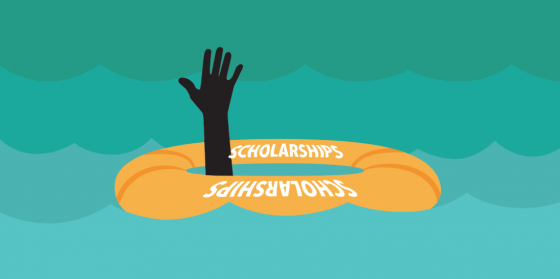A lifeline from student debt: What we can do for ourselves
It’s no news that, for decades now, people who have chosen the path of higher education are getting trapped in a matrix of student debt. According to Forbes.com, a sample of six states showed the average student loan debt topped $30,000 as of last November.
We also hear there are hopeful proposals to fix this, such as free community college-tuition plans announced by President Obama and in Oregon, by state Sen. Mark Hass, D-Beaverton.
Change may not come quick enough, however, so it’s up to us students to tackle debt one-on-one. We must take accountability for our expenditures.
There have been countless editorials about how something, somehow, needs to change about the federal or Oregon state budget, why we shouldn’t lay off teachers, why we shouldn’t cut a particular program or service – this and that – but given the good chance that things don’t change real soon, what is there now that could help us ditch this abyss of uncontrollable debt?
The answer lies in doing all we can, without taking out loans, to manage our current debt. (Remember: The only way a person can accumulate debt is by buying things they don’t have the money for.)
Some of the strongest advice we hear from bank tellers and loan officers is to not spend invisible money. If we don’t have the money to buy something, it’s simple: don’t buy it. Now, we realistically can’t just tell students that if they don’t have $10,000 on them to pay for their winter term classes, they should forget about it. However, students shouldn’t complicate their student debt struggles by owing a credit card company for a $300 pair of Nikes, if they don’t have to.
We can avoid large student debts by avoiding loans altogether. The ideal thing is to apply for FAFSA (federal financial aid) and scholarships. And, Mt. Hood offers many MHCC Foundation-funded scholarships. According to Al Sigala, MHCC Foundation executive director, there are $300,000 in scholarships available each year, derived from investments on college donations have been endowed. With so many options, sometimes there’s only competition for a particular scholarship with just one other person! Application packets become available every spring term to fill out and turn into Financial Aid, located in the second-floor Student Services office on the main Gresham campus. To become eligible for scholarships, students often must identify a specific need, which they must detail in a short essay. There also has to be a goal or plan for education, that the donors will also want to know about.
In most cases, students with a decent GPA can more easily win a scholarship, but there are also scholarships available for different programs, minority backgrounds, and areas of discipline that might not require terrific grades.
Students can receive help filing out FAFSA in the Orientation Center. This needs to be done every year, from January to late spring, in order to be compensated for the next academic year. We advise students who happen to acquire leftover FAFSA money that isn’t being used for tuition to put as much of it toward school as possible. It will come in handy for paying down that future debt.
It’s easy to be caught in the undertow of debt and be swept away, so the best thing students can do is be aware. We all need to be aware of our every penny and each loan, and be thinking with every purchase: Will this help or hurt me, in the long run?
For more information on MHCC’s Foundation Scholarship program and the link to apply for scholarships, follow the link below:
https://www.advocate-online.net/uncategorized/mhcc-offers-a-…nge-of-scholar-8129/


Leave a comment